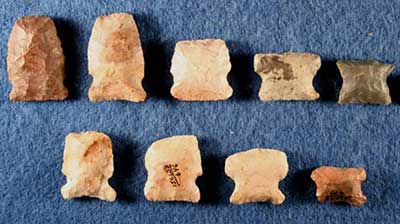Based on the analysis of recovered materials and the characteristics of pit features, researchers inferred that seasonal activities at Panther Rock included chipped stone tool making/maintenance, processing hickory nuts for consumption at the site, butchering deer and other animals, hide processing, and food preparation.

Investigators documented a concentration of river mussel shells at Panther Rock. This indicated that during the late Middle Archaic, site residents considered these animals a food resource. It also indicated that the section of Ohio River closest to the site was a large, shallow, gravel-bottomed waterway - one that could support a relatively large mussel bed/shoal.
River mussel shells were absent in the more recent archaeological deposits at the site. This suggested that either river conditions had changed or Native peoples no longer considered these animals an important food source.